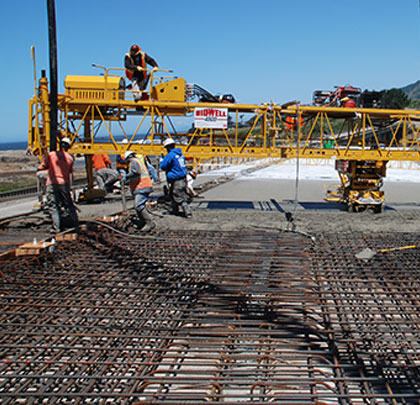In the modern construction industry, finding and retaining a sufficient number of reliable, skilled workers proves to be an ongoing challenge faced by many contractors, particularly those operating in booming construction regions. The effects of the labor shortage are experienced at all levels of the construction hierarchy. For example, in her article, “In Building Boom, Construction Workers Gain the Upper Hand” Nancy Sarnoff cites that Houston-based developer Camden Property Trust has reported placing guards on jobsites to prevent its workers from being poached by competitors and showing televised sporting events at its project sites in an effort to retain workers.
Common contractual provisions add even more pressure to contractors that lack qualified personnel. The employment of underqualified workers is often the cause of construction defects, delays to a project’s progress schedule, and personal injury. Agreements may prohibit contractors from sending to a project workers who the owner may find objectionable. Public projects like schools and airports frequently require workers to undergo criminal background checks and drug screenings before they are allowed on site. A contractor’s failure to staff a project with a sufficient number of skilled workers may lead to a breach of the agreement and ultimately to the termination of the contract. Owners now have a tool to help them evaluate the workforce development system that a contractor has in place prior to entering into an agreement with the contractor.
ASSESSING QUALITY OF WORKFORCE DEVELOPMENT
In 2006, with the assistance of contractor groups, unions, and training specialists, the Construction Users Roundtable (CURT) began developing the Contractors Workforce Development Assessment (CWDA). The CWDA was designed to use 23 training components to grade firms on their attention to training and the strength of their training programs.1 The components by which firms are evaluated include craft skill training, recruitment strategies, financial commitment, and leadership training.2 Owners hope to use the CWDA to motivate contractors to improve training by giving preference to those that have implemented comprehensive training programs.3 The CWDA allows owners and contractors to take a proactive approach to developing the skills of their professionals.

UTILIZING THE CWDA
The process for using the CWDA is straightforward. A contractor must subscribe online to participate in the CWDA. Once subscribed, the contractor answers assessment questions and uploads documentation in support of the answers provided. A neutral, third-party auditor then reviews the submission and documentation and issues an overall score to the contractor. The contractor may then choose to grant permission to specific contractors to view the score. In order to view the score, an owner must also be registered in the CWDA system. The system also allows contractors to receive a customized report outlining their strengths and weaknesses for use in refining and developing their training programs.
The CWDA offers assessments tailored to construction managers, self-performing general contractors, and subcontractors. Owners can use the assessments to prequalify contractors on workforce development, allowing the owners to encourage safe, timely, and well-constructed projects. By giving preference to contractors with strong training programs, those that fall short may be compelled to invest more time and resources in their development programs, which should contribute to a more highly skilled overall workforce. CURT hopes to use the information it gathers through the CWDA to set development benchmarks for the benefit of the construction industry.
Don Whyte, president of the National Center for Construction Education and Research, one of the developers of the CWDA, says that “[r]esearch has shown that craft training pays off through improved productivity and safety, and reduced absenteeism, turnover, and rework. The CWDA is a valuable tool to help elevate the industry’s commitment to workforce development.” Eddie Clayton, a labor management executive for Alabama Utility Southern, stating his firm is already using some of the assessment questions to screen contractors.4 “We still have some work to do on [the rating] details, but owners need to embrace this,” Clayton says, adding that the rating should help owners seeking to match contractors to a project’s size and complexity.
CONTRACTORS SHOULD REMAIN VIGILANT
Although the CWDA may provide value to contractors seeking to evaluate their internal development strategies and to owners hoping to encourage positive development practices, contractors should not interpret a favorable CWDA grade as a sign that their work is done. A contractor should always feel confident that each employee it provides to a project has the skill set, work ethic, and personality necessary to carry out the work in a timely and professional manner. Contractors can expect to see development-based criteria included in future requests for proposal and contracts, but it is unlikely that meeting such criteria could be used as a legitimate defense to an owner’s claim for defective work or schedule delays.
CONCLUSION
In today’s highly competitive construction industry, contractors should be receptive to improving their workforces. Contractors interested in improving the quality of their work or distinguishing themselves from their competitors may benefit from an assessment tool like the CWDA. However, contractors should always take the steps necessary to ensure that the workers they supply to a project are capable of complying with the obligations in the contract and with all applicable laws. ■
- Debra Rubin, Owners to Push Tool To Rate Contractors on
Workforce Quality, ENGINEERING NEWS-RECORD,
Dec. 3, 2012, at 14. - Id.
- Jan Tuckman, CURT Owners: Accelerate Projects,
Promote Training, ENGINEERING NEWS-RECORD,
Nov. 28, 2011, at 16. - Rudin, supra note 2.
About The Author:
Christopher A. Scifres is an associate with Ford Nassen & Baldwin P.C., which is nationally recognized in the construction industry and one of the largest construction law firms in Texas. Mr. Scifres practices construction law with a focus on the litigation and resolution of construction disputes. In addition, he regularly assists clients in preparing and negotiating contracts and other procurement documentation. Reach him at cascifres@fordnassen.com or 214.523.5100.
_________________________________________________________________________
Modern Contractor Solutions, February 2015
Did you enjoy this article?
Subscribe to the FREE Digital Edition of Modern Contractor Solutions magazine.



